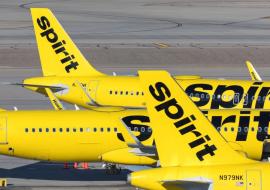Vail Resorts Reports Quarterly Earnings down 29.4 Percent


Vail Resorts reported that net income of $61.6 million in the third fiscal quarter decreased $25.7 million, or 29.4 percent, from the prior year third fiscal quarter. Through nine months, net income of $87.7 million decreased $26.4 million, or 23.1 percent, from the prior year period.
Advance season pass sales for the 2009-10 ski season, including the Epic Season Pass, for the spring pass sales period through May 31, 2009, increased over the comparable spring pass sales period for the 2008-09 season, up approximately 37 percent in units.
Vail reported that EBITDA, which includes the company’s mountain and lodging segments, of $139.7 million in the third fiscal quarter decreased $37.0 million, or 20.9 percent, from the prior year third fiscal quarter. Through nine months, Resort Reported EBITDA of $206.5 million decreased $51.3 million, or 19.9 percent, from the prior year period.
However, despite the worsening economic environment over the course of the 2008-09 ski season, the company’s mountain segment metrics remained relatively consistent over the entire ski season, with total skier visits down 5.3 percent for the season and total lift ticket revenue down 8.4 percent, consistent with those metrics reported on a season to date basis at various points throughout the ski season.
The decrease in overall visitation was partially mitigated by growth in visits from season pass holders, due to an increase in the number of passes sold and an increase in pass usage during the season.
The number of season passes sold for the 2008-09 ski season was 12.2 percent greater than the number of passes sold for the 2007-08 ski season and combined with an 8.3 percent increase in effective pass price, drove a 21.8 percent increase in season pass revenue.
Season pass revenue as a percent of total lift ticket revenue grew from 26 percent for the 2007-08 ski season to 34 percent for the 2008-09 ski season. The company’s ancillary business revenue lines, including ski school, dining and retail/rental, experienced even greater percentage declines than our lift ticket revenue variance due to the combination of lower destination visitation and lower average guest spend during their stay.














